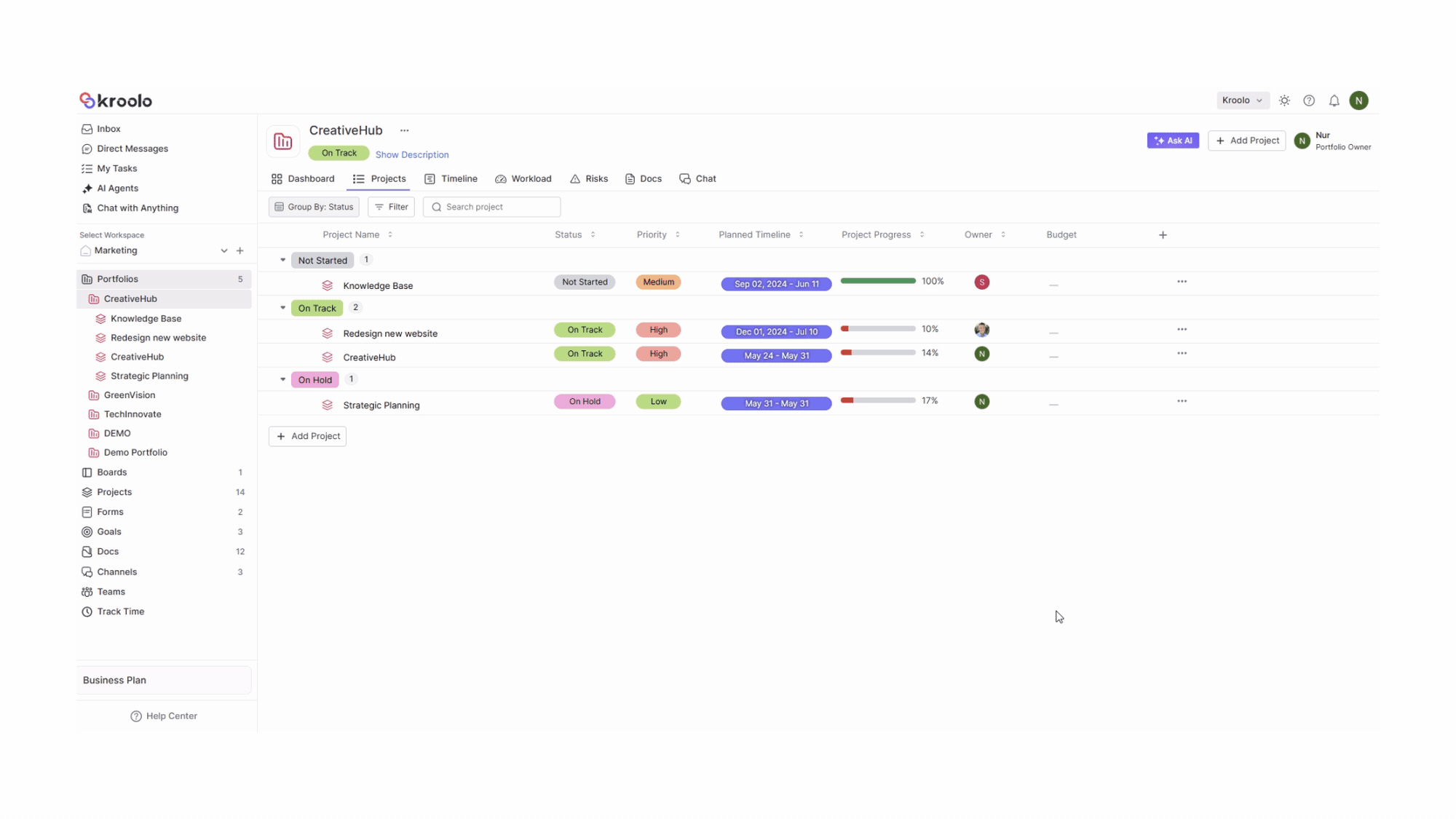


Jul 25, 2025
-
By Ivan

![]() AI Summary By Kroolo
AI Summary By Kroolo
Operational planning in 2025 isn’t just a checklist—it’s your business’s real-time GPS. With markets shifting faster than ever, operational planning has become the backbone of agile, data-driven decision-making.
Whether you’re a startup scaling fast or an enterprise managing global teams, planning your operations strategically isn’t optional—it’s survival. From AI-powered forecasting to cross-functional alignment, today’s tools are redefining how companies prepare, adapt, and thrive. Gone are the days of annual plans gathering dust; 2025 demands dynamic, living strategies that flex with change.
Let’s explore how modern operational planning is shaping the future of work—and why your business can’t ignore it.
Operational planning frequently sits between lofty vision decks and on-the-ground execution, translating multi-year objectives into weekly sprints, budgets, and performance targets. By clarifying who will do what, when, and with which resources, an operational plan forms the backbone of sustainable growth.
A well-built plan is both a management tool and a communication contract, keeping everyone—from interns to investors—aligned on priorities, timelines, and risk thresholds. Below we unpack the concept in six essential layers.
An operational plan is a detailed document that lists short-term objectives, tasks, timelines, and resource requirements to advance a firm’s strategic goals. It usually covers one fiscal year or less, offering concrete steps rather than broad aspirations.
Strategic planning sets multi-year direction; tactical planning converts that direction into departmental targets; operational planning creates the actionable checklist for daily execution, bridging the gap from boardroom to front-line teams

Key elements include SMART objectives, KPI dashboards, resource allocations, risk logs, quality standards, and review cadences—each documented for traceability and audit readiness.
Plans may run quarterly in fast-moving SaaS firms, annually in manufacturing, or on a rolling basis in volatile markets where quarterly re-forecasting is mandatory.
Department heads draft the plan, finance validates budgets, HR assures staffing, and PMOs oversee governance so that every process owner knows their deliverables.
The cycle follows six R’s: Review strategic goals, Research capacity, Roadmap tasks, Resource allocation, Run execution, and Revisit assumptions for continuous improvement.
Without an operational plan, strategies stall, budgets bloat, and employees operate in silos, causing profit leakage and customer churn. The following paragraphs outline the value delivered across six dimensions.
A robust plan clarifies how each daily activity ties back to strategic OKRs, aligning teams and preventing “random acts of work” that erode focus.
Resource visibility—people, tech, cash—reduces duplicate spending and ensures that scarce assets are funneled toward high-ROI initiatives.
By assigning every task to an owner, operational plans embed accountability, boosting on-time delivery rates and morale across cross-functional teams.
Documented contingencies—supply chain backups, cash buffers, staffing flex pools—enable rapid pivots during market shocks or black-swan events.
Regular KPI reviews identify process bottlenecks, feeding a Kaizen loop that elevates efficiency quarter after quarter.
Detailed plans satisfy auditors, regulators, and investors by demonstrating that the organization can execute strategy responsibly and transparently.
From shop floors to cloud servers, operational planning empowers diverse sectors. Each case below shows how the discipline adapts to unique workflows.
Factories use takt-time based plans to synchronize assembly lines, minimize inventory holding costs, and implement just-in-time deliveries.
Engineering teams convert product strategy into sprint backlogs, ensuring predictable deployments, beta feedback loops, and go-to-market alignment.
Merchants plan Black Friday stock levels, staffing shifts, and merchandising displays months ahead to capture holiday demand spikes without overstock.
Hospitals forecast patient inflows, align nurse shifts, and allocate ICU beds, improving patient outcomes and compliance with safety ratios
School districts translate strategic initiatives—STEM programs, digital literacy—into semester lesson plans, teacher development schedules, and funding requests.
Organizations convert donor strategies into volunteer schedules, event timelines, and impact metrics, ensuring transparency for grant auditors.
Studying industry leaders clarifies best practices and pitfalls.
Toyota’s operational plan synchronizes suppliers, assembly, and delivery windows, slashing waste and setting global benchmarks for lean production.
Amazon orchestrates inventory, marketing, and logistics months in advance, using predictive analytics to ensure 1-day fulfillment across millions of SKUs
Mayo deploys algorithm-based shift planning, reducing emergency department wait times and optimizing bed turnover for higher patient satisfaction.
Netflix turns strategic audience insights into editorial calendars, localization subtasks, and platform rollouts, accelerating viewer engagement worldwide.
Unilever operationalizes sustainability by embedding carbon targets, sourcing rules, and waste KPIs into factory schedules and supplier contracts.
Governments activated standing operational plans for PPE stockpiles, field hospitals, and contact-tracing dashboards to manage pandemic waves.
Quantifiable gains follow disciplined operation planning. Here are a few of them.
Streamlined workflows cut rework, saving up to 15% in labor and material costs within one fiscal year.
Dashboards provide live KPI feeds, enabling managers to pivot within hours rather than weeks.
On-time deliveries and faster service resolutions translate into higher Net Promoter Scores and repeat sales.
Clear expectations and resource support reduce burnout, decreasing voluntary turnover by up to 12%.
Repeatable processes allow businesses to open new plants, launch new markets, or onboard new clients without reinventing the wheel.
Companies mastering operational planning out-deliver rivals on speed, cost, and quality, creating durable market moats.
Traditional spreadsheets break under modern complexity. Kroolo’s AI-powered WorkOS brings speed, intelligence, and control.
By parsing RFPs or voice prompts, Kroolo creates full project plans—tasks, milestones, dependencies—in under 6 seconds, slashing setup time.
Real-time capacity charts help managers balance workloads, preventing burnout and surfacing resource gaps before deadlines loom.
One click turns task data into KPI dashboards, offering trend lines, variance alerts, and “what-if” forecasts for proactive decisions.
Custom AI agents update statuses, draft reports, and flag risks, freeing teams from manual grunt work and raising productivity 10×.
Bidirectional sync with Jira, Asana, Slack, and others centralizes data, while AI search surfaces answers across docs, chats, and tasks instantly.
SOC 2, HIPAA, GDPR, and ISO 27001 compliance plus role-based access controls make Kroolo enterprise-ready at global scale.
The Q&A below resolves the top concerns we hear from clients.
Most firms craft a 12-month plan, updated quarterly to reflect market shifts and performance data
Department leaders draft their sections, but a PMO or COO typically owns cross-functional alignment and governance.
Use leading KPIs (cycle time, defect rate) and lagging KPIs (profit margin, customer retention) tied to plan objectives.
High-velocity teams hold weekly stand-ups for task updates and monthly KPI checkpoints for strategic alignment.
Yes—operational planning scales; a five-person startup gains clarity and investor confidence from documented execution steps
While spreadsheets work initially, specialized platforms like Kroolo add AI, automation, and integrations that spreadsheets cannot match at scale.
Tags
Project Management
Productivity